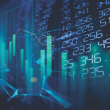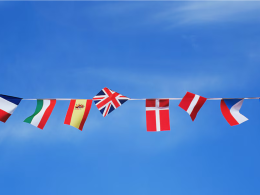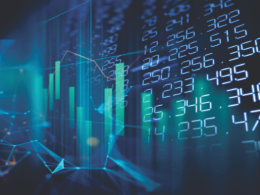by Michael Hatcher, Head of Global Equities and Director of Research, Invesco Canada Equity team, Invesco Canada
The October sell-off in global markets has several underlying factors, but the most commonly cited reasons are the rise in U.S. 10-year Treasury yield, concerns on earnings growth and the overall level of valuations.
Recently, I was asked what affect rising rates have had on the management of Invesco Global Dividend Class (the Fund). The answer is easy: very little.
When investors think about income or dividend funds, they tend to think about those that are focused on high dividend yields. That is not the management team’s focus. We’re looking for compounding companies that can ideally grow their dividends over time.
If you try to maximize dividends, you’re going to find yourself in companies that we don’t think are long-term compounders – you’re going to be in utilities, telcos and much heavier in financials. It is these sectors with high dividend yields that have been hurt the most by rising interest rates.
There’s currently a broad effect on the market in terms of high valuations and multiples coming down, and that’s been affecting us, just like anyone else, but the affect has been much worse on those who focus on high-dividend payers than it has been on the Fund.
The companies that make up our target universe have been resilient enough that we have not seen any fresh bargains emerge in the recent market sell-off. We still find the market expensive, and it is difficult to find new ideas that are trading at prices that provide our preferred margin of safety. Having said that, we like what we currently hold.
Focus on quality
For those of you who are familiar with Invesco Global Companies Fund, there are many similarities between it and Invesco Global Dividend Class, given they are both based on the FORS team’s investment philosophy – focusing on the Free cash flow, Organic growth, Return on capital, and Sustainable competitive advantage of each company.
In both mandates, we look to invest in high-quality businesses that has the potential to generate a significant amount of cash. The majority of those companies also pay a dividend.
The investable universe of these two funds is virtually identical, aside from one exception: Invesco Global Dividend Class seeks companies that actively return cash to shareholders, either through share buybacks or by paying a dividend. Invesco Global Companies Fund does not have this constraint. An example of a company that would be in Global Companies, but not in Global Dividend, is Alphabet Inc., the parent company of Google, which does not pay a dividend.
Based on the way we invest, there’s not a lot that keeps me up at night. We look to invest in things that produce recurring purchases that are both desired and required – on a daily basis, millions of people are eating cookies from Mondelez, using their Visa cards and consuming media. These are all smaller purchases that are part of day-to-day life.
There are certainly shocks that can slow these purchases down, but there should be very few that can send them off a cliff. These aren’t the kind of manufacturers that can see their order books cut in half due to a big pull-back in industrial spending.
Market correction
Even after the recent pull-back in global equity markets, valuations in broad parts of the market still seem rather pricey. Over the next couple of years, I think something will have to give, and the effect will likely be indiscriminate. When that happens, we’ll be glad to hold what we hold, and I think we’ll be well-positioned to deploy more capital at lower valuations.
The biggest threat facing the market, in my opinion, is that interest rates could rise at a rate that is structurally faster than the market anticipates.
If there’s anything that can put pressure on the system over the next decade, it’s the interplay between high levels of overall debt and rising interest rates. These combined should decrease disposable income because people will be spending more to service their debt.
We’ve had about 40 years of falling and/or low interest rates across the developed world, so normalizing rates combined with the record-high levels of consumer debt1 could result in issues that take a long time to resolve.
For investors seeking a balanced mandate, Invesco Global Dividend Class also serves as the 60% equity sleeve of Invesco Global Diversified Income Fund. The fixed income component is mixture of investment grade, high yield, government bonds and floating rate instruments.
This post was originally published at Invesco Canada Blog
Copyright © Invesco Canada Blog















